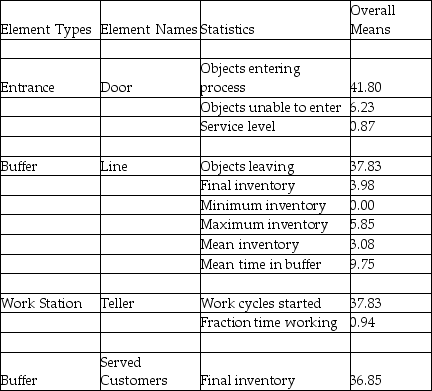Scenario E.1
SimQuick is being used to simulate the following bank process:

Customer arrivals at the Entrance Door of the bank with an average time between arrivals of 2.5 minutes. The Line Buffer holds 6 customers. If a customer arrives and the buffer line is filled, the customer leaves. The Work Station Teller's processing time per customer is normally distributed, with a mean of 3.0 minutes and a standard deviation of 0.5 minutes. The Served Customer Buffer in the flow chart is used to count the number of customers processed during the period simulated. A 2-hour period was simulated.
The SimQuick simulation is run, and the results are as follows:

-Use the information in Scenario E.1. Approximately how much time did the average customer who entered the system spend waiting in line?
Definitions:
Excess Supply
A situation where the quantity of a good or service supplied exceeds the quantity demanded at the current price, leading to surplus.
Sunglasses
Protective eyewear designed to prevent bright sunlight and high-energy visible light from damaging or discomforting the eyes.
Price
The amount of money expected, required, or given in exchange for something else; a fundamental economic concept that represents the value of a good or service.
Excess Demand
A situation in a market where the quantity demanded of a product exceeds the quantity supplied at a given price, leading to upward pressure on prices.
Q6: The observer assigned a performance rating factor
Q30: A detailed visual representation of the block
Q43: Given that the third unit took 100
Q52: An operating characteristic curve is a plot
Q54: A single-sampling plan by attributes is needed
Q68: A single factory produces two different products
Q71: _ is useful for allocating scarce resources
Q77: Twelve customers arrive at the lunch counter
Q84: A company wants to develop an acceptance
Q210: Referring to Table 19-6,what is the opportunity